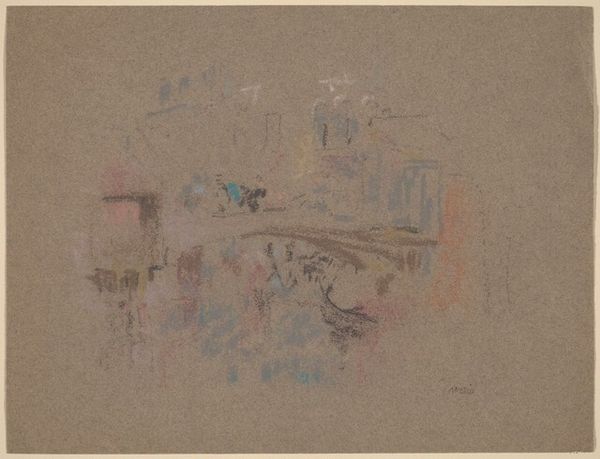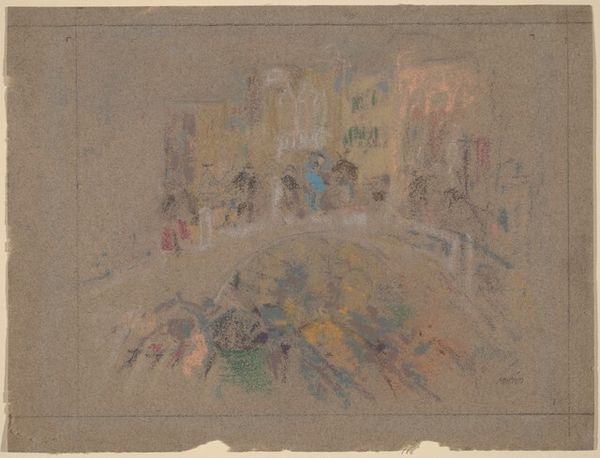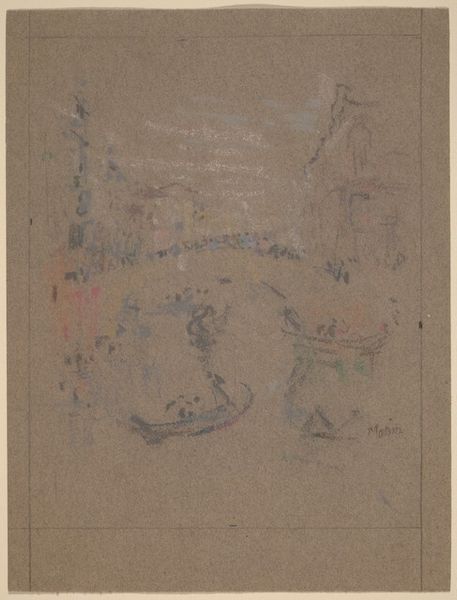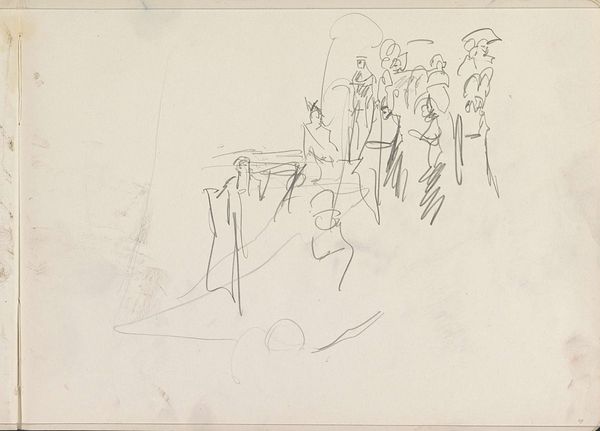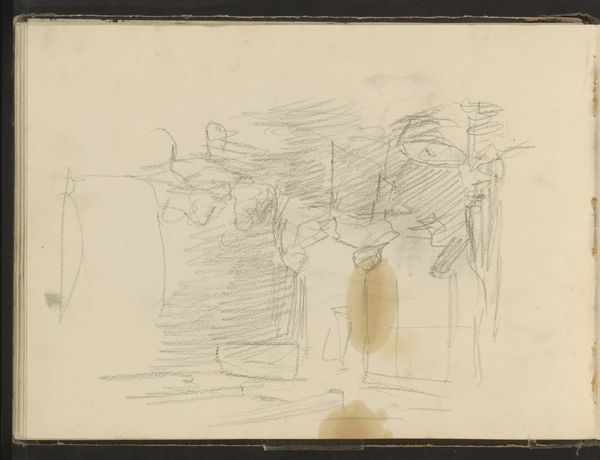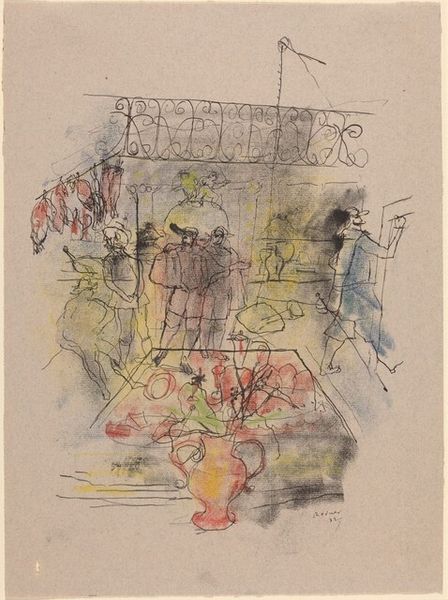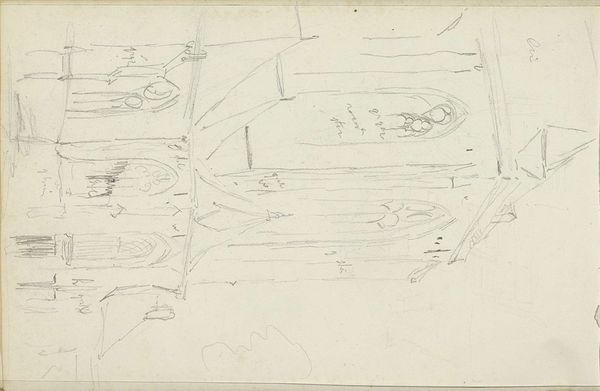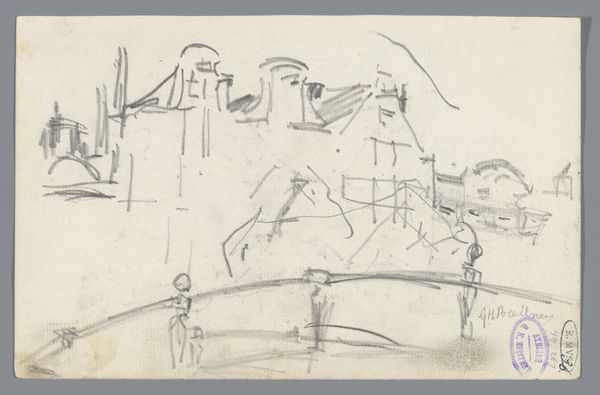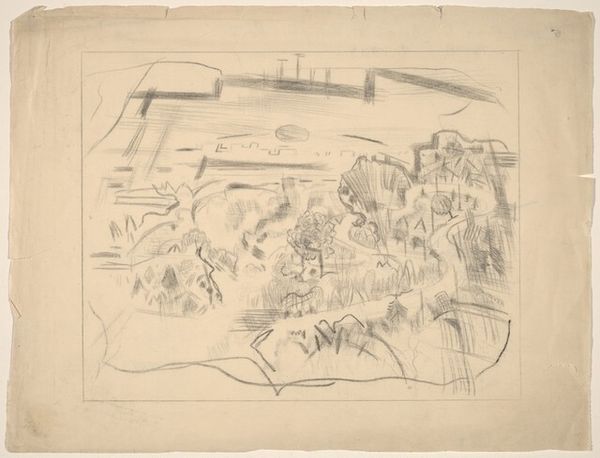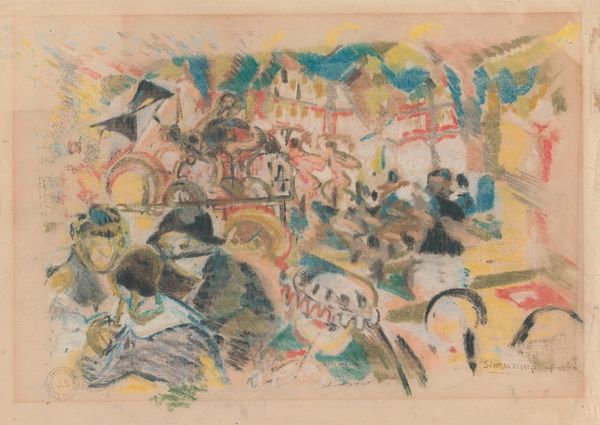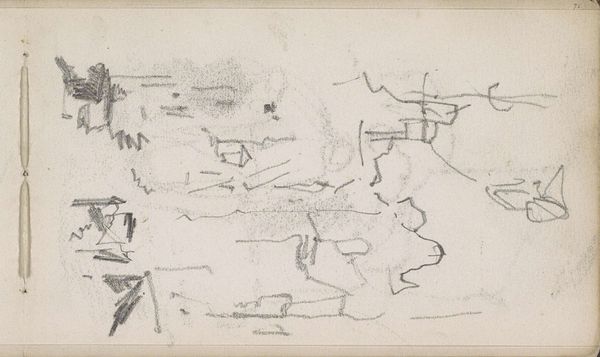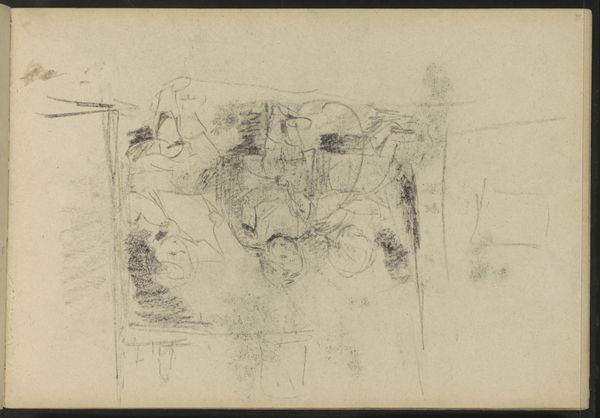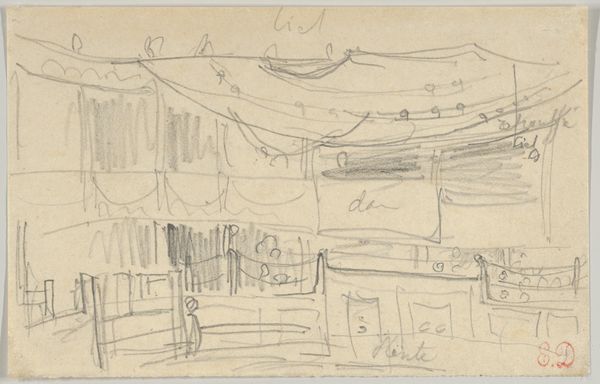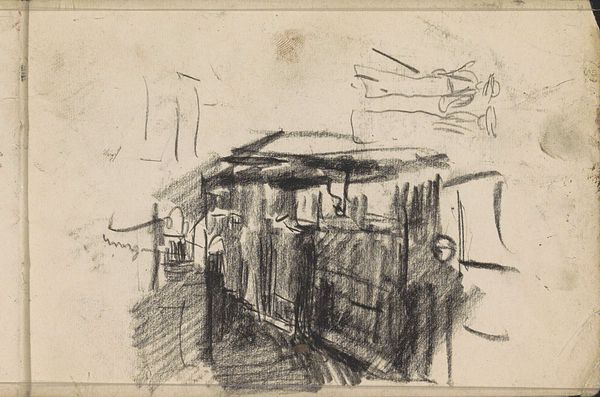
Dimensions: overall: 23.9 x 31.3 cm (9 7/16 x 12 5/16 in.)
Copyright: National Gallery of Art: CC0 1.0
Editor: So, this is John Marin’s “Venetian Canal” from around 1907, done with pastel and drawing. It has this kind of faded quality to it, almost like a memory. What strikes me is the medium – the chalkiness of the pastel seems perfect for capturing the city’s misty light. What do you see in this piece? Curator: I’m drawn to the materiality here – Marin's choice of pastel. It wasn’t just about ease, but about expressing the ephemeral nature of Venice and its economy heavily reliant on trade, crafts and artistry. The medium’s delicate, easily smudged quality reflects Venice's own precarious position as a city constantly battling the elements and changing political landscapes. The grayness dominating this composition might allude to the industry of Murano glass making too, subtly critiquing the aestheticization of labor through industrial landscape depiction. Editor: That's fascinating. I hadn’t thought about the pastel itself carrying that weight. Does the impressionistic style play into that, too? Curator: Absolutely! The rapid strokes and unfinished quality emphasize the process of creation and evoke the transient experience of tourism for Venice itself, thus making consumerism through tourism an invisible subject. Marin highlights the artist's labour but it also challenges our own role as viewers, do you notice? He doesn't depict grandeur but labor, as he witnesses it and we consume that depiction too, thereby keeping Venice's artistic landscape circulating to sustain Venetian communities' economy. Editor: I see what you mean. It’s not just about depicting a pretty scene, it's showing Venice at work, always shifting and making. So how different can an artwork be viewed based on its cultural value? Curator: Considering value of art can vary from its labour and creation to consumerism, this question encourages you and me to reconsider value and price in different spectrums! Editor: That’s given me a lot to think about; how the materials and the style of “Venetian Canal” really intertwine to explore the economics and the fleeting existence of Venice. Curator: Indeed, the artist doesn't depict labour from life or his immediate impression alone. It becomes a means and site through pastel that allows an artwork’s labour of representation circulate consumer value.
Comments
No comments
Be the first to comment and join the conversation on the ultimate creative platform.
